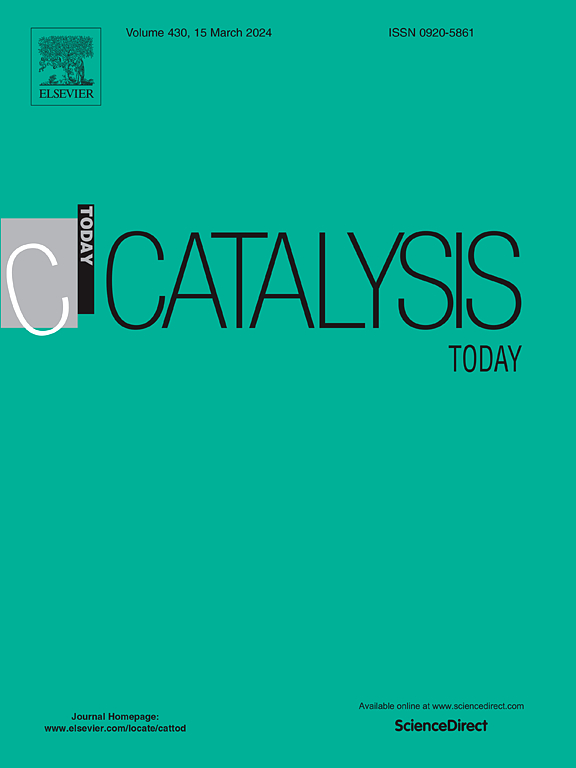Mechanistic insights into the conversion of glucose to formic acid over vanadium-based catalyst
IF 5.2
2区 化学
Q1 CHEMISTRY, APPLIED
引用次数: 0
Abstract
The catalytic oxidation of biomass-derived compounds represents a promising and sustainable pathway for the production of valuable chemicals, such as formic acid, which is a key candidate for hydrogen storage and CO₂-neutral energy applications. This study investigates the selective oxidation of glucose to formic acid using vanadium oxide supported on titania (VOx/TiO₂) as the catalytic system. This paper elucidates the reaction mechanism and analyzes the product distribution over time under controlled experimental conditions. The system exhibited selective glucose conversion, with formic acid emerging as the primary product, followed by intermediates such as arabinose, glyceraldehyde, acetic acid, and formaldehyde. Mechanistic studies suggested that the selective formation of formic acid proceeds via successive C1–C2 bond cleavage assisted by the peroxo species of vanadium. These findings highlight the key role of molecular and activated oxygen in the reaction pathway, while excluding the direct decomposition pathways for formic acid. This mechanistic insight and the role of vanadium-based peroxo species formed on the catalyst surface provide a critical foundation for optimizing catalyst design for biomass conversion processes.
求助全文
约1分钟内获得全文
求助全文
来源期刊

Catalysis Today
化学-工程:化工
CiteScore
11.50
自引率
3.80%
发文量
573
审稿时长
2.9 months
期刊介绍:
Catalysis Today focuses on the rapid publication of original invited papers devoted to currently important topics in catalysis and related subjects. The journal only publishes special issues (Proposing a Catalysis Today Special Issue), each of which is supervised by Guest Editors who recruit individual papers and oversee the peer review process. Catalysis Today offers researchers in the field of catalysis in-depth overviews of topical issues.
Both fundamental and applied aspects of catalysis are covered. Subjects such as catalysis of immobilized organometallic and biocatalytic systems are welcome. Subjects related to catalysis such as experimental techniques, adsorption, process technology, synthesis, in situ characterization, computational, theoretical modeling, imaging and others are included if there is a clear relationship to catalysis.
 求助内容:
求助内容: 应助结果提醒方式:
应助结果提醒方式:


